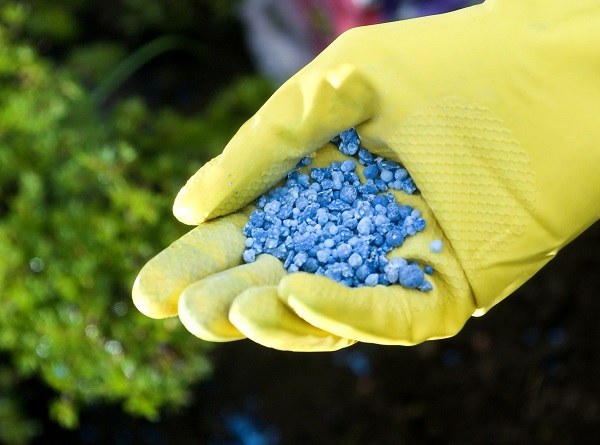Content:
With the arrival of spring, luxurious peonies bloom magnificently in the garden, pleasing the eye and decorating the site. Caring for them does not require a lot of time and effort. Unpretentiousness, endurance, decorativeness - this is how their qualities can be characterized. Peonies planting and care in the open field can be carried out throughout the growing season and will not be difficult even for novice summer residents.
A perennial can grow in one bed for about 10 years without requiring replanting. Which season to choose so that it takes root faster and is less of a hassle?
Spring planting of a peony
Distinguished by a variety of species and shades, all varieties of peonies have a unique aroma. Some gardeners are sure that planting a plant at this time is not the best idea: planting a bush that has started to grow is stressful for him. In their opinion, by weakening the plant, it provokes the appearance of diseases that can lead to death. But many grow crops planted during this period.
Seat selection
To create optimal conditions for peonies when growing and nursing in the open field, you must choose the right type of soil. The plant is light-loving. An equally important factor is the landing site, which must be sunny and open. Areas with shallow groundwater or waterlogged plots will not work. Peonies also do not like drafts and cold winds.
Before planting peonies, you should take care of the space that allows the flowers to grow freely. If several bushes are planted nearby, the distance between them should be optimal for the normal development of each and equal from 0.7 m to 2 m.
The larger the territory, the less risk the culture will be exposed to. You should not try to grow peonies near the walls of buildings or near fences - with such a location, flowering will worsen and resistance to diseases will weaken. It is undesirable to place bushes under the tree, it is better to step back 2 or 3 m further.
How to plant
Another condition for the correct planting of the culture is not to miss the deadline. It is better to start planting peonies that have not yet blossomed immediately after the snow melts, around the first ten days of April. The process will be crowned with success when performing a detailed algorithm of actions:
- First, a pit is prepared, with a diameter of at least half a meter, its optimal depth is 60-70 mm and more.
- After 2 weeks, the bottom is covered with drainage material (crushed stone, pieces of brick, slate or foam), covered with coarse sand. The purpose of drainage is to prevent water stagnation.
- Next, you should prepare a soil mixture by mixing equal amounts of sand, humus and turf soil. You also need to add mineral fertilizers: wood ash - 500 g, double superphosphate - 200 g, ferrous sulfate - 1 large spoon.
- The root, carefully dug out with a lump of soil, is placed vertically. The buds should be at a depth of 3 to 7 cm, which prevents them from drying out. The prepared grooves are covered and compacted from above.
Soon, subject to the rules of transplantation, the peony gives off shoots that form a voluminous bush.But bloom this summer will not work.
Required tools
The powerful rhizome of an adult plant can go deep into the ground at a distance of about 90 cm. To dig it, you need to make an effort. To do this, you will need a garden shovel, they dig in a bush with it, stepping back from the center from 15 to 20 cm. It is best to dig it with a pitchfork, which will help to avoid damage.
If there is a need to transplant an old bush with many shoots, you can use a crowbar. In this case, it will be easier to remove the root system with an earthy clod. The choice of tools can also be influenced by soil type, size and age.
Tips
In addition to the question of when to plant peonies, you need to take into account some nuances:
- flowers are not formed if the bush is planted in the shade;
- the culture needs a neutral soil - with increased acidity, growth will stop;
- to solve the problem, you need to liming the soil;
- when selecting planting material, preferences are given in favor of sections without damage, having 2 or 3 renewal buds and at least a couple of additional roots longer than 5 cm.
Peony care in spring
After a while, the first shoots will appear. These are future luxurious peonies. Care and cultivation, in accordance with the rules of agricultural technology, will ensure their normal growth and healthy condition.
No particularly difficult activities in the garden to care for the bushes are required. They are unpretentious, but you still have to watch. The growing season of the culture lasts more than six months, starting in May and ending in November. Immediately after planting, the first abundant watering is performed. The soil around the plant must be mulched to retain moisture. Peat is not suitable for this purpose - it increases the acidity of the environment.
Further, the main care is loosening in order to prevent the formation of soil crust and cracking. As the plant grows, care should be taken to ensure that other plants do not create shade. Its presence can lead to a slowdown in vegetation, weakening of endurance, the formation of small buds.
To prevent diseases, maintain the intensity of flowering, so that the buds are huge and do not shrink, the culture must be "renewed" by replanting to a new location. To increase the size of the inflorescences, a technique will help, when using which one largest flower remains on the stem, and the rest are pinched.
Removing damaged and dried lower leaves will help direct nutrients to the vegetative parts. Peduncles that have begun to fade should be removed. Otherwise, the formation of seeds will begin, to which the plant will direct part of the valuable energy necessary for growth and flowering.
These simple activities will preserve the decorative effect of the peony bush. Constant inspection of the plant will not allow you to miss the first signs of infection. In addition to these measures, additional feeding and a lot of moisture will be required.
Watering
In the first 4-5 weeks after planting, high soil moisture plays an important role. In the future, watering is carried out not very often. But it must be abundant enough to keep the roots in a humid environment. During the dry summer season, each plant requires 1-1.5 buckets of water. Top dressing is applied only to moistened soil.
Fertilizers and feeding
Powerful peony bushes will need a lot of useful substances to build up the leaf apparatus and form buds. Therefore, they must be provided with mineral fertilizers and microelements. The culture can get nutrition in two ways: root (root) and foliar dressing. Which one should you choose?
Foliar dressing
The nutrient solution for this type of feeding is sprayed onto the green parts of the plants.In summer, for young bushes (up to 4 years old), it is advisable to use urea in the form of foliar dressing immediately after the emergence of young shoots. The frequency of their introduction is 1 time in 2-3 weeks.
The process is repeated three times (preferably in the morning or on cloudy weather):
- first, a urea solution is applied;
- the second time fertilizers are added to it;
- the third feeding is carried out only with minerals.
During the budding period for adult bushes, it makes sense to use organic fertilizers such as a solution of mullein in a ratio of 1:10 and poultry manure diluted at a rate of 1:25.
Root (root) dressing
They are brought under the bushes in two steps. From March to April, mineral fertilizers are scattered over the surface of the soil, which dissolve in melt water and gradually penetrate to the roots. Since July, peonies are fed by scattering minerals into the root circle. Then they are watered, as a result of which the substances come to the root system. To do this, it is better to pour the mixture into the holes made at a distance of 10 to 15 cm around the circumference from the stems.
Diseases and pests
An integral part of flower care is to control their health. If the rules of agricultural technology are not followed, there is a risk of infection with viral and fungal diseases.
Most often, shoots are subject to diseases such as gray rot and rust. In addition, they can be prone to spotting and circular leaf mosaics. Treatment with fungicides will help get rid of infections. The effect appears when spraying with Bordeaux mixture. Means "Alirin" will help to avoid damage to the mosaic of the leaves.
Peonies suffer from pests, which include aphids, beetles, bronzes, caterpillars and nematodes. Their presence can be overcome by using copper and iron sulfate, karbofos, actellik, green soap, fufanon and other drugs.
Caterpillars and beetles are assembled mechanically (by hand). A lot of damage to the culture is also caused by ants that find food and shelter under the bush from the heat. Their attack can lead the plant to death. To combat insects, chemicals and environmentally friendly methods of exposure are used:
- Poisonous sprays with which the bush is sprayed.
- Lures with the effect of poisoning: "Combat", "Anteater".
- Obstacles made of water poured into a car tire cut and laid around the circumference of the stems. Pests will not be able to overcome the water barrier.
- You can use herbs and spices that the ants cannot tolerate. Parsley, onions, garlic, mint, lavender, wormwood are sown, scattered near the peonies, and they are also made into decoctions and watered.
Planting peonies in summer
Usually, they try not to transplant the culture, since the survival rate is much worse in hot conditions. Saplings with an open root system do not tolerate transplanting well. Knowing how to plant peonies correctly in the summer, even novice gardeners can easily cope with a summer planting, avoiding the hassle of problematic survival.
Before planting bushes of growing peonies in summer, you should take care of the planting material. For this purpose, it is better to purchase a plant in a container, the conditions of which make it possible to painlessly adapt and take root in hot weather. A closed root system makes it possible to extend the planting period throughout the growing season.
Planting in autumn
Some summer residents are of the opinion that it is better to transplant peonies in the fall. If you can't come to the dacha often, and the possibilities of frequent watering are limited, then an autumn planting is suitable.
It is held one month before the arrival of cold weather.This measure will prevent the plant from freezing. Planting dates depend on the climatic features of the area. In Siberia, this is done from August to October. In the Urals, it is better to transplant a perennial in the first half of September. In the northwestern part of Russia, in the Leningrad region, as well as in the middle lane, planting can continue for another week. Residents of the southern regions can plant the crop starting in September and finishing in mid-October.
Peony care in the autumn
Pruning adult plants
It is not worth postponing the process for spring days - soft shoots are even worse to cut off, and it is not very convenient to cover them from freezing. Cutting off the stems early will weaken the bush as the leaves dry out, it's time to get started. The most suitable time comes after the first frost (late October-early November), when the stems tilt towards the ground. They are cut with pruning shears flush with the ground.
Watering
In anticipation of winter, abundant watering of the root area is necessary. It is advisable to combine it with feeding, especially in cases where the mineral is applied dry. Watering is carried out before scattering the granules or after adding nutrient solutions.
Fertilizer
Many gardeners advise, after pruning, to make top dressing, applying them in a liquid version from the beginning of autumn to the first decade of October. Their need is obvious, because the growth of roots does not stop, so they need nutrition.
For autumn dressings, experienced flower growers recommend using fertilizers of the potassium-phosphorus group, which have a positive effect on the formation of new buds.
Applying dry fertilizer, 10 to 15 g of potassium and 15-20 g of phosphorus are scattered under the bush. In the form of a solution, a crushed and dissolved tablet in 10 liters of water is introduced into the soil. Mixed bone meal (1 cup) with wood ash (1.5 cups) would be a good top dressing. The mixture contributes to the plant's endurance during low temperatures.
Preparing for winter
To preserve the perennial in regions with harsh winters, it is covered with a layer of soil, at least 10-15 cm thick, or with other covering material (sawdust, leaves, compost).
Tree peony
Giant peonies are more common in Japan and China. In recent years, they began to be grown in the open field and in the conditions of Russia. Having successfully adapted, they bloom profusely, despite the severe frosts in winter.
The main difference from the flowers traditionally growing in the areas is the height of the bush, which reaches 2 meters. The size of the blooming bud is also impressive, ranging from 12 to 20 cm in diameter. In addition, the light brown stems of their tree-like relative do not die off.
Planting peonies in spring
Newbie gardeners are often interested in the question of how to plant a shrub. For this, loamy soil on the sunny side of the yard or flower garden is suitable. When planting, it is advisable to add Fertik's fertilizer, a little manure and sand, if desired, a coconut substrate. You need to plant in early spring, for this:
- long before planting, a cone-shaped depression is made, measuring 70X70 cm;
- the bottom is drained with a layer of 25-30 cm and part of the soil is covered;
- a peony is placed in a hole to a depth of 5 cm, without burying the flower bud;
- spill abundantly with water with the addition of phytosporin;
- compact and mulch the ground around the seedling.
If you want to plant several bushes, the distance between them should be 1.5-2 meters.
Care features
One of the important activities when growing a shrub is pruning. If the herbaceous species are pruned in late autumn, the tree species should be pruned in the spring. The peculiarity of pruning is the removal of dried and old shoots. Flowering will become more intense due to the removal of parts of the branches up to the upper bud.
The shoots of mature bushes often droop from the severity of large flowers, which causes a deterioration in the decorative appearance. Therefore, the shrub must be tied up. Alternatively, you can install trellises, metal rods or pieces of reinforcement used as supports.
The culture fits perfectly into the landscape design, combining with other plants of various colors and shades.
Growing herbaceous peony
This variety decorates the garden, it is presented in a wide variety of forms. The height of herbaceous plants ranges from 0.3 to 1.5 m. Lush peonies with leaves of yellow, milky, purple, ruby and dark red color perfectly fit into landscape compositions and are used for landscaping the yard and garden.
For good air permeability, it is necessary to monitor the loose condition of the soil. Fertilized with organic matter and fed with mineral fertilizers three times: at the beginning, when the buds start to grow, during the budding period and at the end of flowering. Given the high frost resistance, you can do without covering.
Peonies adorn plots due to their decorative effect. But they also have medicinal properties. Plants contain beneficial ingredients such as flavonoids and tannins. Peony rhizomes and seeds bring benefits for the human body, the extracts of which are included in the composition of soothing tinctures and cardiological preparations.



















